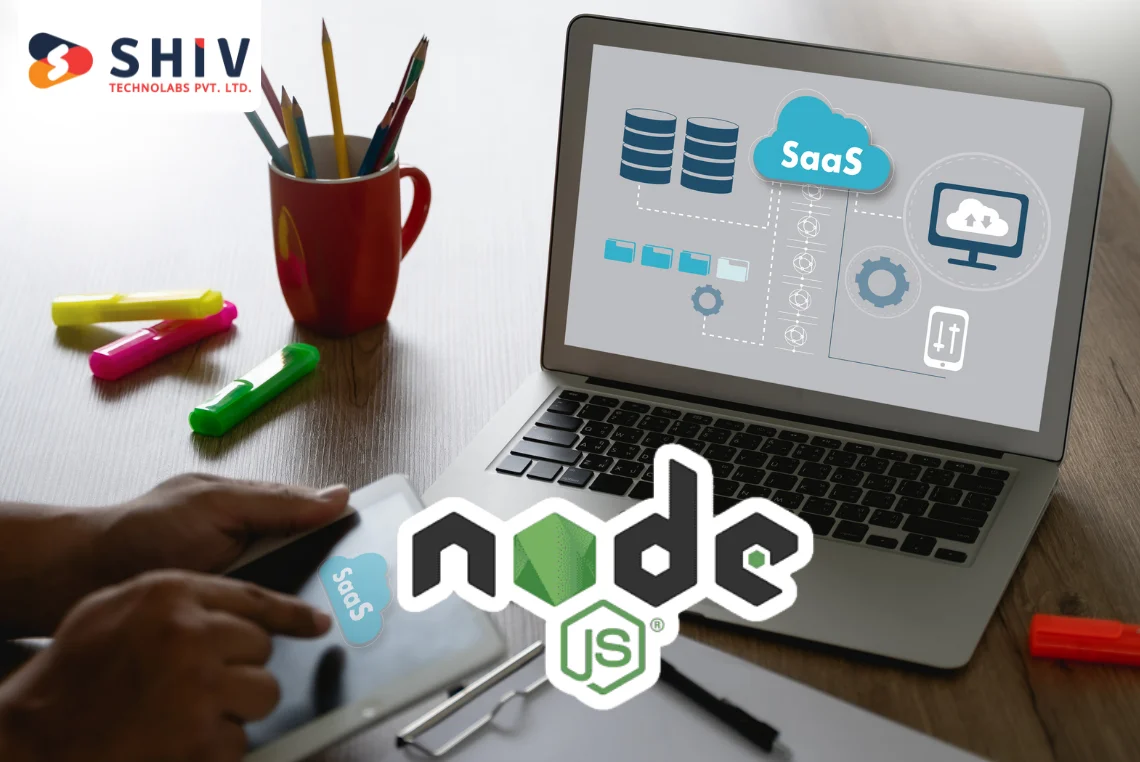Table of Contents
Creating a full-stack development is challenging, especially if you are new to web development. Combining front-end and back-end technologies to create a seamless, full-stack application is essential.
You can build full-stack apps with React and Node.js as Node.js is a robust server-side runtime environment, and React.js is a powerful library for building user interfaces. They both are coupled to create dynamic and responsive web applications.
Let’s learn more about react.js and node.js integration services and React.js and Node.js complete stack development services.
Combining React.js And Node.js: Why?

React.js is a popular JavaScript library for building user interfaces, especially single-page applications. It greatly simplifies the development process as it allows developers to create reusable UI components.
On the flip side, Node.js is the runtime environment that executes JavaScript outside a web browser. Its non-blocking, event-driven architecture makes it a perfect choice for real-time applications such as gaming servers, chats, live tracking apps and collaborative tools. It is often used for back-end services like APIs.
Merits And Demerits Of React.js
Here are some of the merits and demerits of React.js. Let’s look into each of them.
# Merits
- Virtual DOM improves the performance by updating parts of the UI.
- Cross-platform enables mobile app development with React Native.
- JSX syntax combines HTML and JavaScript in a more efficient and readable way.
- It has a large ecosystem, meaning a rich library collection of libraries and tools for enhanced functionality.
- It has strong community support, which includes tutorials, plenty of resources, and active development.
- Unidirectional Data Flow in React.js simplifies data management and debugging.
# Demerits
- SEO challenges require extra setup for optimal SEO in SPAs.
- Due to boilerplate code, React apps can involve a lot of repetitive code.
- Newcomers may need help with concepts like hooks and JSX as they have a steep learning curve.
- External libraries like Redux may be necessary for larger apps as they have complex state management.
- It may affect the performance if not optimized due to the large bundle size.
Merits And Demerits Of Node.js
Here are some of the merits and demerits of Node.js. Let’s look into each of them.
# Merits
- Node.js offers fast performance and high-speed execution for I/O-intensive tasks built on a V8 engine.
- Single Programming Language allows both front-end and back-end development with the same language and simplifies the development process.
- It has a large Ecosystem that provides access to many libraries via npm for rapid development.
- It is cross-platform and runs on various operating systems (Windows, macOS, Linux).
- It is ideal for building real-time capabilities.
- It is excellent for building scalable applications, especially with microservices.
# Demerits
- Due to its non-blocking I/O architecture, Node.js may need help with heavy computation tasks.
- Node.js may not be as mature or feature-rich as traditional back-end technologies while growing for some enterprise applications. Thus, it is immature.
- Due to the single-threaded nature of Node.js, it is not suited for CPU-heavy tasks.
- Its asynchronous nature makes proper error handling more complex.
- The heavy use of callbacks can take it to complex, hard-to-manage code.
Setting Up the Environment
Step 1: Install Node.js and npm
If you haven’t already, download and install Node.js from nodejs.org. This will also install npm (Node Package Manager).
Step 2: Create a React Application
To bootstrap your React application, Use Create React App:
npx create-react-app my-app cd my-app npm start
Step 3: Set Up a Node.js Server
Create a new directory for your Node.js server:
mkdir my-app-server cd my-app-server npm init -y npm install express cors
Building the Node.js Server
Create an `index.js` file in your `my-app-server` directory:
const express = require(‘express’);
const cors = require(‘cors’);
const app = express();
const port = 5000;
app.use(cors());
const data = [
{ id: 1, name: 'Item 1'},
{ id: 2, name: 'Item 2'},
];
app.get(‘/api/items’, (req, res) => {
res.json(data);
});
app.listen(port, () => {
console.log(`Server is running on http://localhost:${port}`);
});
Integrating React with Node.js
Step 1: Fetch Data from the API
Open `src/App.js` in your React project and update it as follows:
import React, { use effect, useState } from ‘react’;
import ‘./App.css’;
function App() {
const [items, setItems] = useState([]);
useEffect(() => {
fetch(‘http://localhost:5000/api/items’)
.then((response) => response.json())
.then((data) => setItems(data));
}, []);
return (
<div className=”App”>
<header className=”App-header”>
<h1>Items</h1>
<ul class="orangeList">
{items.map((item) => (
<li key={item.id}>{item.name}</li>
))}
</ul>
</header>
</div>
);
}
export default App;
Step 2: Configure Proxy for Development
You can set up a proxy in your React project to avoid CORS issues during development. Add the following line to your `package.json` in the React project:
“proxy”: “http://localhost:5000”
Running the Application
Make sure both your React application and Node.js server are running:
Start the Node.js server:
cd my-app-server node index.js Start the React development server: cd my-app npm start
Open your browser and navigate to `http://localhost:3000`. You should see a list of items fetched from the Node.js server.
Conclusion
In summary, integrating React.js with Node.js for full-stack development is a practical approach to building responsive and dynamic web applications. Node.js handles the server-side logic and data processing, whereas React.js provides a smooth and interactive user interface. Developers can create scalable and high-performing applications by following this article’s integration steps and best practices.
At Shiv Technolabs, we provide the power of React.js and Node.js as it is a full-stack JavaScript development company. Our team ensures that your app is optimized for security, performance, and scalability, whether you’re building a real-time application, a data-driven website, or a dynamic user interface. We hire React.js and Node.js developers to help you develop your app. We help businesses create user-friendly web applications by combining these two powerful technologies that meet the evolving demands of today’s digital world.





















